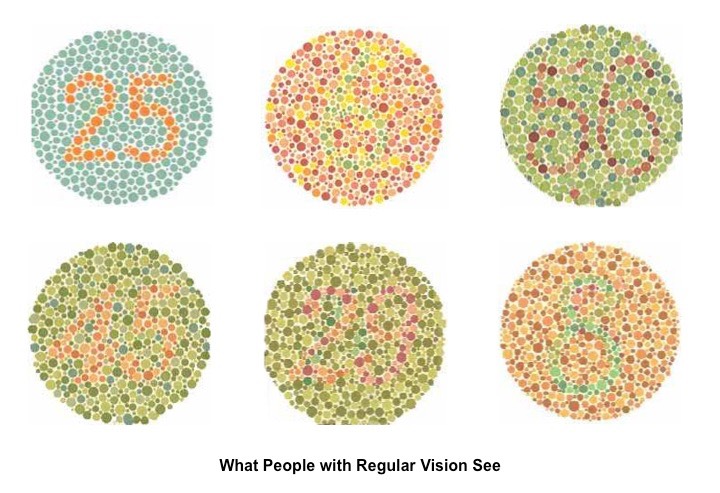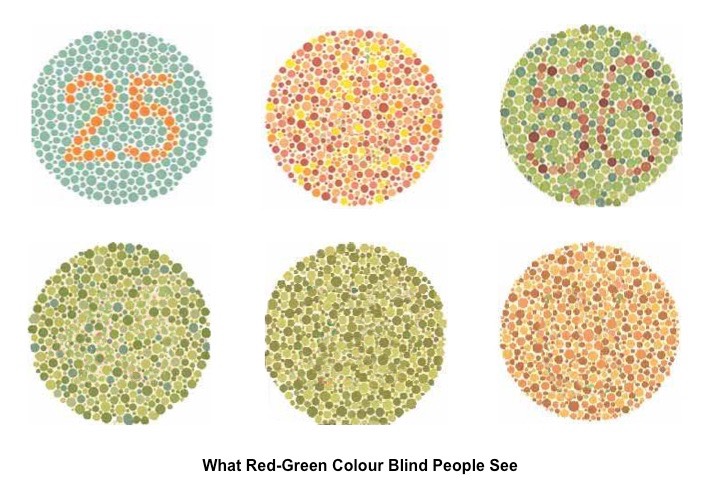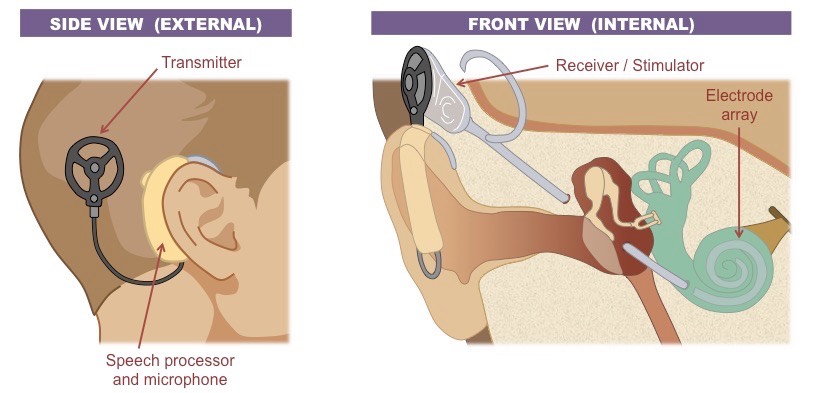![]()
Application:
• Red-green colour-blindness as a variant of normal trichromatic vision
Red-green colour blindness is a genetic disorder whereby an individual fails to discriminate between red and green hues
- There are three different types of cone cells, each of which absorbs different wavelengths (trichromatic: red, green, blue)
- The genes responsible for producing red or green photoreceptors are located on the X chromosome (sex-linked)
- If either of these genes are mutated, red and green wavelengths cannot be distinguished
- As these genes are recessive and located on the X chromosome, red-green colour-blindness is more common in males
- Red-green colour-blindness can be diagnosed using the Ishihara colour test
The Ishihara Colour Test
(Click on the image to compare normal vision and colour blind vision)


![]()
Application:
• Use of cochlear implants in deaf patients
Cochlear implants may be used to stimulate the auditory centres of the brain in patients with non-functioning hair cells
- Standard hearing aids are ineffective in deaf patients as they amplify sounds but do not bypass defective hearing structures
Cochlear implants consist of two parts – an external part (microphone / transmitter) and an internal part (receiver / stimulator)
- The external components detect sounds, filter out extraneous frequencies and then transmit the signals to the internal parts
- The internal components receive the transmissions and produce electrical signals via electrodes embedded in the cochlea
- The electrical signals are then transferred via the auditory nerve to be processed by the brain
Cochlear Implants

